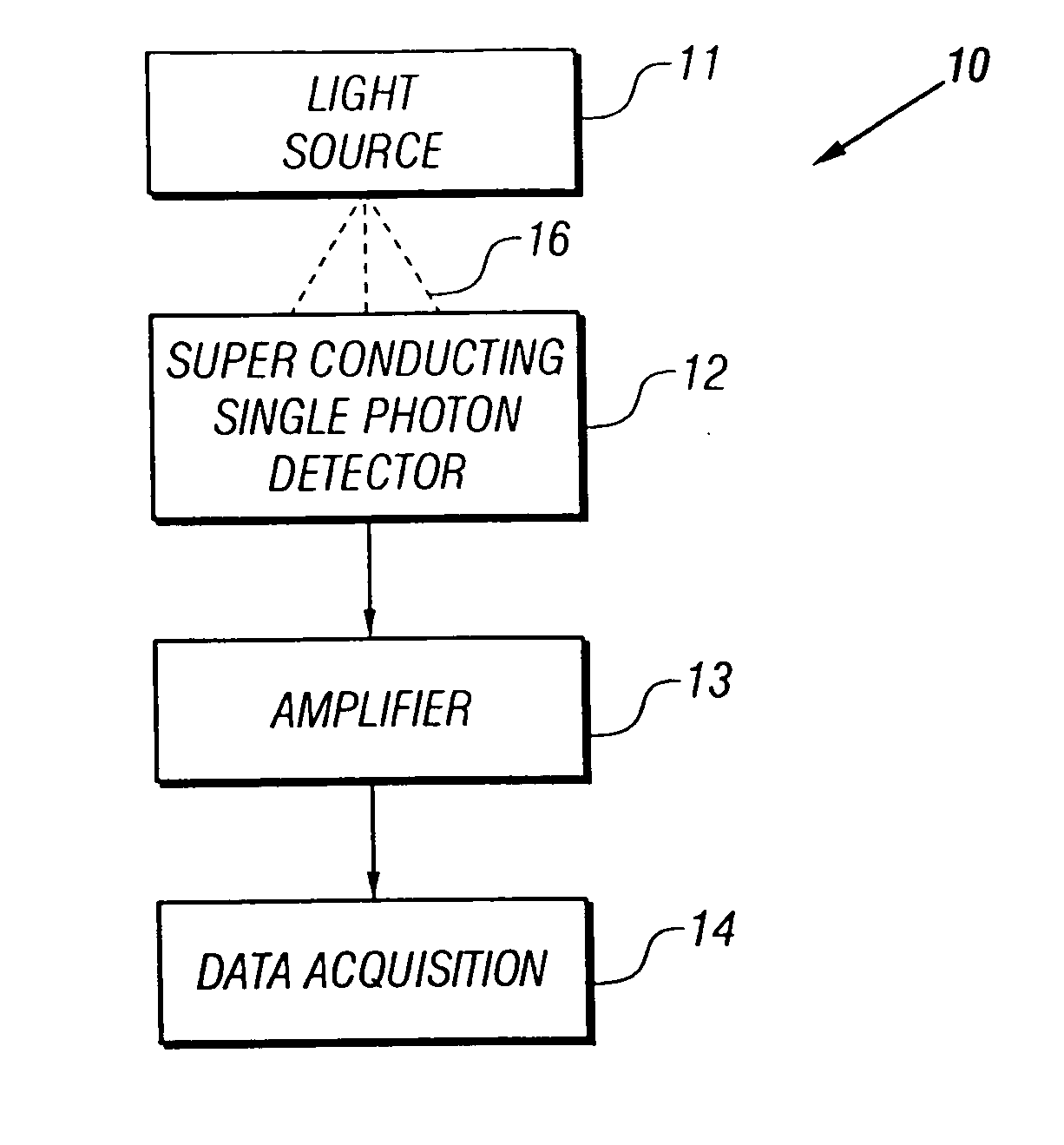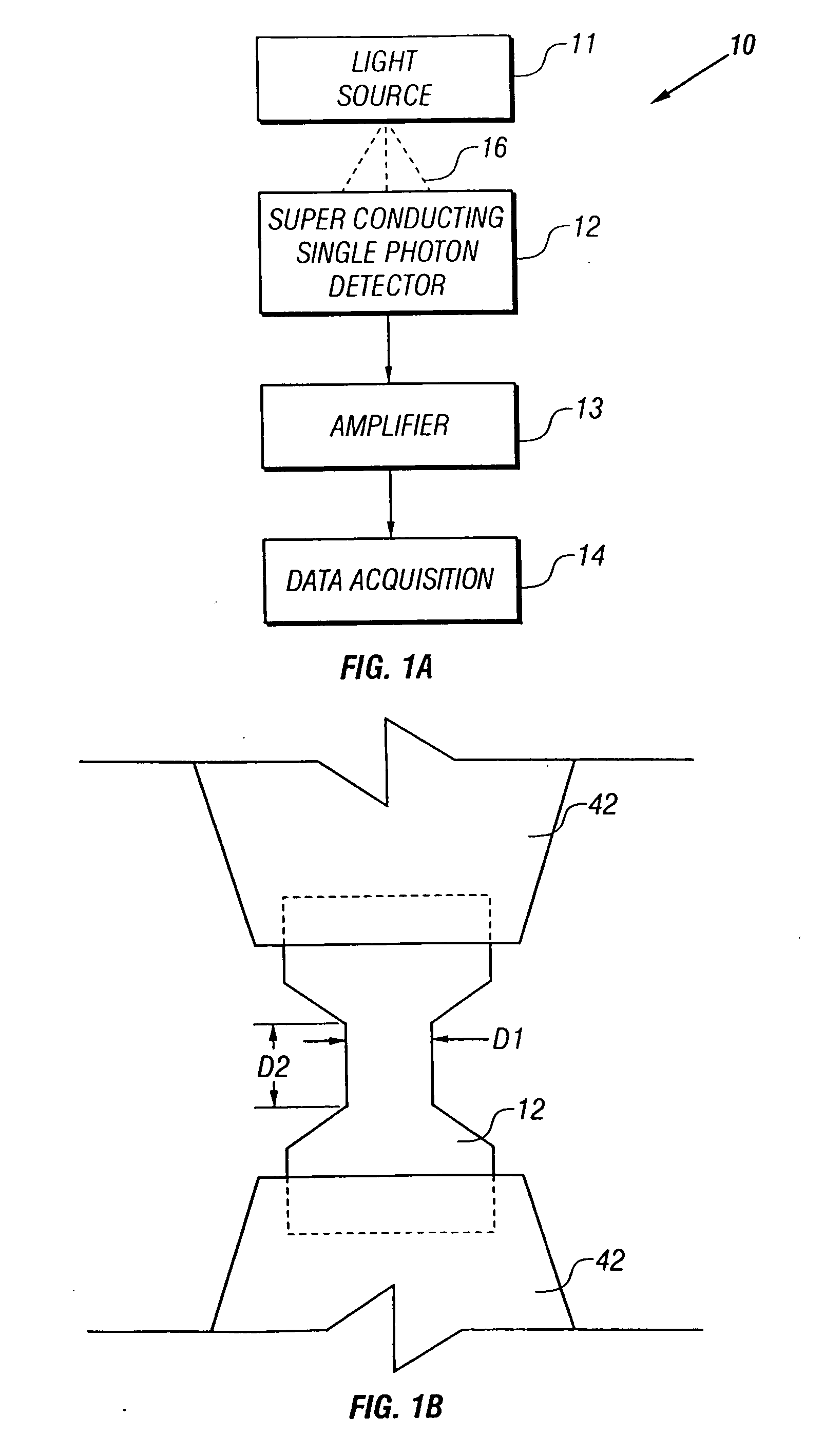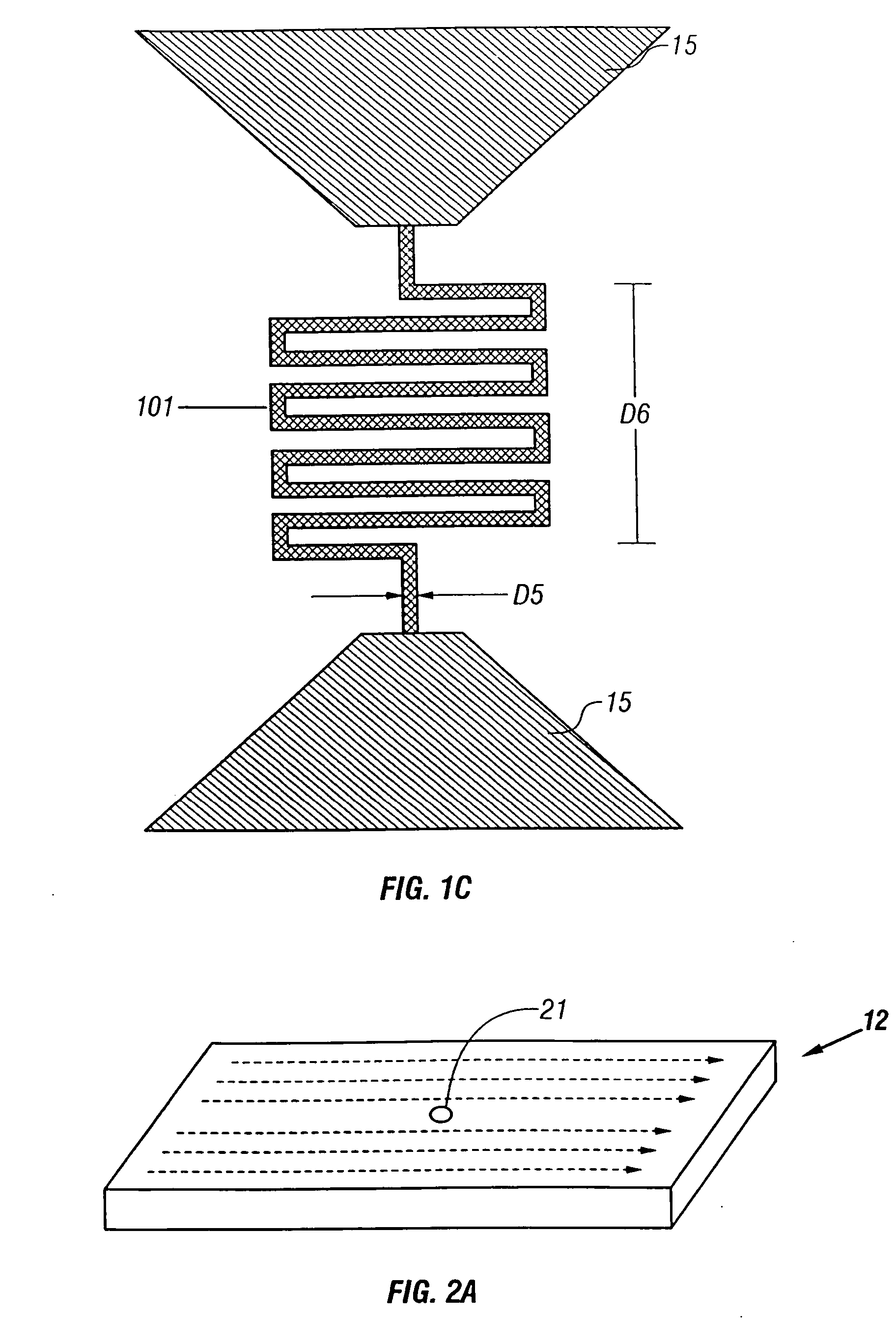Superconducting single photon detector
a single photon detector and superconducting technology, applied in the field of photodetectors, can solve the problem that the apds are not sensitive enough to detect photons with wavelengths longer than 1100 nm, and achieve good quantum efficiency
- Summary
- Abstract
- Description
- Claims
- Application Information
AI Technical Summary
Benefits of technology
Problems solved by technology
Method used
Image
Examples
Embodiment Construction
FIG. 1A shows a block diagram of a photon counter 10 including a superconducting single-photon detector (SSPD) in accordance with an embodiment of the invention. Referring to FIG. 1A, an SSPD 12 detects photons 16 emitted by a light source 11, which includes suitable optics (not shown). It is to be understood that light source 11 is not necessarily a part of photon counter 10 and is, for example, a transistor which emits photons when switching. Upon absorption of an incident photon, SSPD 12 in response generates an electrical output pulse signal that is amplified by associated amplifier 13. Each output pulse signal is recorded and counted by data acquisition system (DAQ) 14 (e.g., a computer equipped with appropriate interface circuitry and software).
In one embodiment, SSPD 12 is a narrow, thin strip of a superconducting material that is electrically biased to provide an output pulse signal upon absorption of a single incident photon. As shown in the plan view of FIG. 1B, SSPD 12, ...
PUM
 Login to View More
Login to View More Abstract
Description
Claims
Application Information
 Login to View More
Login to View More - R&D
- Intellectual Property
- Life Sciences
- Materials
- Tech Scout
- Unparalleled Data Quality
- Higher Quality Content
- 60% Fewer Hallucinations
Browse by: Latest US Patents, China's latest patents, Technical Efficacy Thesaurus, Application Domain, Technology Topic, Popular Technical Reports.
© 2025 PatSnap. All rights reserved.Legal|Privacy policy|Modern Slavery Act Transparency Statement|Sitemap|About US| Contact US: help@patsnap.com



